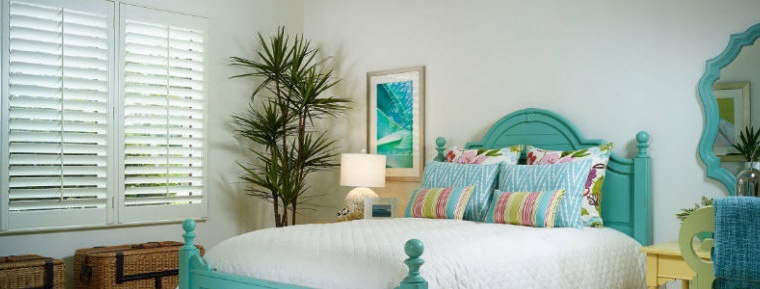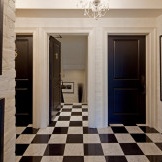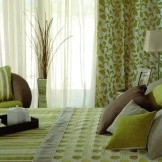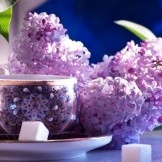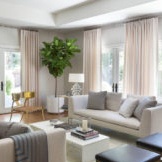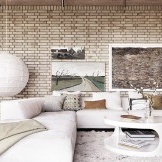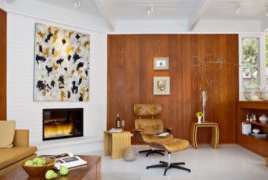Mint color in the interior
Mint color for a reason has become so popular recently. It is used by clothing designers, manufacturers of finishing materials, furniture and various accessories for living spaces. Mint color gives a feeling of freshness and lightness, spring coolness and awakening of feelings and colors. One detail or a mint color surface is enough to refresh the atmosphere of any interior. But the mint color is not as simple as it might seem at first glance - it has many shades. We suggest you familiarize yourself with this incredibly fresh and light tone in combination with various shades when decorating a room using the example of our impressive selection of design projects. You will be inspired to use mint color in the interior of your own home.
Mint color features
The mint color has many positive qualities:
- he is able to beneficially influence the well-being of a person, relax and soothe;
- The mint color can be organically used to decorate any room - it is appropriate both in the bedroom and in the corridor, in the living room or children's room, in the bathroom and kitchen space;
- it is difficult to oversaturate the image of the room with a mint color, it does not tire the look in any quantity;
- mint shades give coolness and are perfect for rooms located on the south side of the building, through the windows of which most of the day the sun shines;
- Mint color goes well with many other shades and the main (neutral) colors - white, gray, beige, brown.
The combination of mint colors with other colors in the interior
Mint tone is easy to combine in the interior with the main colors, which often act as a background, neutral and unobtrusive. But the shades of mint themselves can serve as the main color for the decoration of the room, slightly diluted with other tones, mainly as an accent. The only thing that you must always remember is that the mint color is a mixture of blue and green (slightly diluted with white), which means it belongs to the group of cold shades. If you do not pursue the goal of creating a cool image for a room constantly flooded with sunbeams, then you need to dilute mint shades with flowers from a segment of a warm palette.
The combination of mint and white is universal. Delicate shades are suitable for decoration of any room. A bright image can be used in the bedroom and the children's room, to create a light and fresh design of the kitchen or living room, even in utilitarian spaces this approach to decoration will be appropriate. You will be provided with a visual increase in the volume of the room and an ideal background for placing furniture and decor as accent elements.
Mint color can be easily combined with all shades of gray. Gray color can be safely considered neutral, along with shades of white tone. The combination of gray and mint has enough restraint and nobility that can be used in the interior of any stylistic direction: the gray-mint union harmoniously looks both in modern style and in the traditional image of the premises.
The entire palette of beige color goes well with mint tones. The contrast of cold and warm colors, allows you to create original, but at the same time not flashy images of the rooms. Such combinations can equally effectively be used both in the living room and bedroom, as well as in the kitchen space or utility rooms.
An incredibly fresh, spring image of the room can be created using a combination of mint color with various shades of orange (coral) - from peach to terracotta.It is not difficult to distribute the intensity of the main and auxiliary shades - for decoration of small rooms choose pastel shades, and use bright colors as accents. In rooms with a large area and panoramic windows, deep saturated shades can be used for wall decoration (at least one accent).
A similar effect can be achieved with a combination of mint shades with bright pink and fuchsia. As a rule, such combinatorics are used in the design of girl's rooms. Dilution of mint and pink colors with snow-white surfaces allows you to create cool, original and bright, but at the same time easy-to-read images of the rooms.
Mint color goes well with any kind of wood. Contrasting the mint coolness with the natural warmth of the wood pattern always leads to a harmonious combination in the design of a variety of rooms. It is noteworthy that the combination of wooden surfaces with mint color can be used in almost any stylistic direction of interior design - from strict classics to trendy modern trends, from eclecticism full of details to concise minimalism.
The use of mint color in the design of various rooms
As mentioned above - mint color can be used in the design of a wide variety of rooms. Currently, this color is also actively used in the manufacture of finishing materials, furniture, textile solutions and decorative elements. All you have to do is decide whether the mint color is chosen as the background of the room (unobtrusive pastel shades are suitable), the tone of the accent surface (you can use a saturated color or a bright print), will be represented by furniture (for example, upholstery of upholstered furniture or execution of storage systems) or decorative elements (window drapery, decorative pillows on a sofa or sleeping place).
Living room
In the living room, mint color is most often used for wall decoration. It can be either a light, pastel shade chosen to decorate all the walls, or a rich and even bright mint tone, which has become the color scheme for one accent surface. Depending on the intensity of the chosen shade, you can also choose furniture for the lounge area. Light furnishings, combined with light mint shades, will create a delicate and light look, ideal for a small living room. Dark furniture will look contrasting against the background of mint walls, creating a dynamic and non-trivial image of the room.
But not everyone decides to use a mint color as the main tone of the finish, even light shades. But in the application of this fresh green-blue shade performed by the textile decor of the living room it will not be difficult. It can be drapery for windows (curtains and curtains, plain or with print), the execution of sofa cushions and even upholstery of the main upholstered furniture - a sofa and armchairs.
Bedroom
In a bedroom, a light mint hue is most often used to create the background of the entire room, i.e. for wall decoration. This design method is suitable even for small rooms - a light and bright image fits perfectly into the atmosphere of rest and relaxation. If the room is located on the south side of the building, then you can use white as a companion in light mint colors - a cool palette will visually “bring down” the color temperature. If the bedroom is located on the northern part of the building, it is better to use warm tones of wood (in the performance of furniture, creating flooring) to balance the colors and bring more warmth and coziness to the interior of the room.
If the bedroom has a very modest size and flaws in the architectural design, and in addition to the white color of the finish, it is impossible to use any other color scheme, then for the mint tone you can highlight the local performance.This can be textiles on the windows, the design of a berth, lighting, carpet or decorative elements.
Children's room
Mint color is able to have a beneficial effect on the children's psyche, it does not irritate the eye, and has soothing and relaxing qualities. Therefore, it can be used equally effectively both in the room for an active child, who needs help in calming and preparing for bedtime, and in the nursery for a calm baby, even a newborn - it all depends on the intensity of the shade. For decoration, it is better to use a light mint or gray-mint color, creating an almost neutral background to effectively emphasize the beauty of furniture, textile decoration, and decor.
Kitchen and dining room
In the kitchen, the mint color is most often found in the execution of the facades of the furniture set. Given that most of the kitchen is occupied by storage systems, the color of the facades largely shapes the image of the room, its character, color temperature. Light mint shades are suitable for a country style kitchen, shabby chic. The richer mint tones are usually used in kitchen spaces decorated in a modern style.
If you are not ready to make the entire kitchen set in mint color, stop at only one tier of cabinets (top or bottom) or execute a dining group, island or bar counter in a fresh green-blue tone.
But also as a background for a furniture set in the kitchen space, the mint color fits perfectly. A fresh and light image of the kitchen will be provided in a combination of mint finish and bright kitchen facades. If kitchen cabinets are the color of natural wood, then the entire interior will look harmonious, filling the atmosphere of the room with warmth and comfort.
Bathroom
In the bathroom, the mint color looks more than appropriate - fresh, cool, resembling the color of the ocean on a sunny day. To create an atmosphere in which you can not only carry out the necessary water procedures, but also really relax, take a break from the bustle of the city, the mint color can be used both as the main one for wall decoration and for designing accent surfaces.
Ancillary facilities
Mint color in the hallway or hallway, the space near the stairs or on the veranda? Why not. Given that the auxiliary rooms in most dwellings do not have windows, light-mint shades as a background for decoration become a difficult option, and a solution that will help to create a fresh, unobtrusive image of utilitarian spaces. The snow-white ceiling, light mint walls and dark flooring will help to create an interior in which, in addition to a light and eye-friendly image, you can create a visual increase in space, which is a pressing issue for small rooms.

